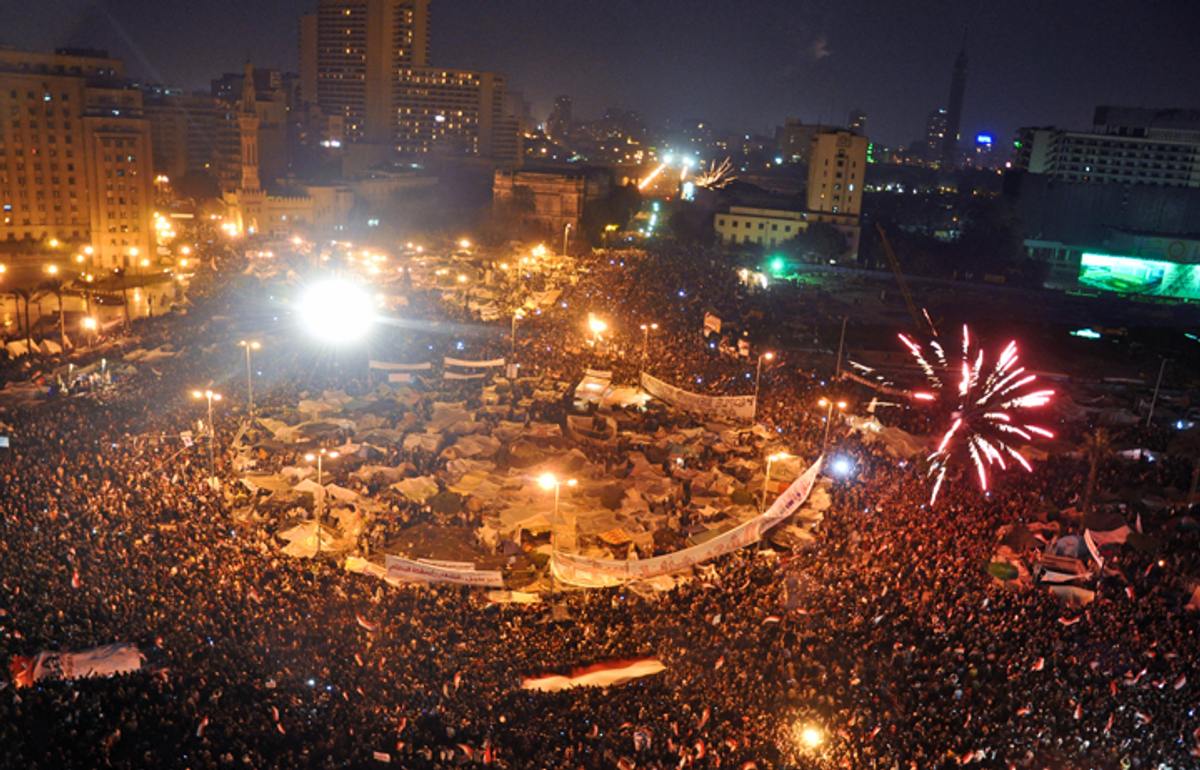When Tunisian street vendor Mohamed Bouazizi set himself on fire on December 17, 2010, the tragic story of his life, poverty, and suicide resonated across the world. His act of protest and eventual death inspired Tunisians to rise up against their corrupt president, Zine El Abedine Ben Ali, and his dictatorial grip on power. Few knew at the time that Tunisia's "Jasmine Revolution" would inspire much of the Arab world, and soon Egyptian students, bloggers, and activists began to rally for action in their own country.
The day for mobilization in Tahrir Square, whose meaning symbolically translates to "Liberation" Square in English, was designated to January 25th. The "Day of Rage," and its now famous Twitter hashtag #Jan25, have come to symbolize the early moments of the Egyptian Revolution. From their calls for freedom to their demands for protection against poverty, corruption, and unemployment, the protests captivated a nation that had been ruled by the same president for three decades. Two years later, after historic elections and a new president, the spirit of the revolution lives on. As Egypt continues along its path to self-determination, we look back at the protests and some of the developments they inspired.
[slide_show id="13179100"]



Shares